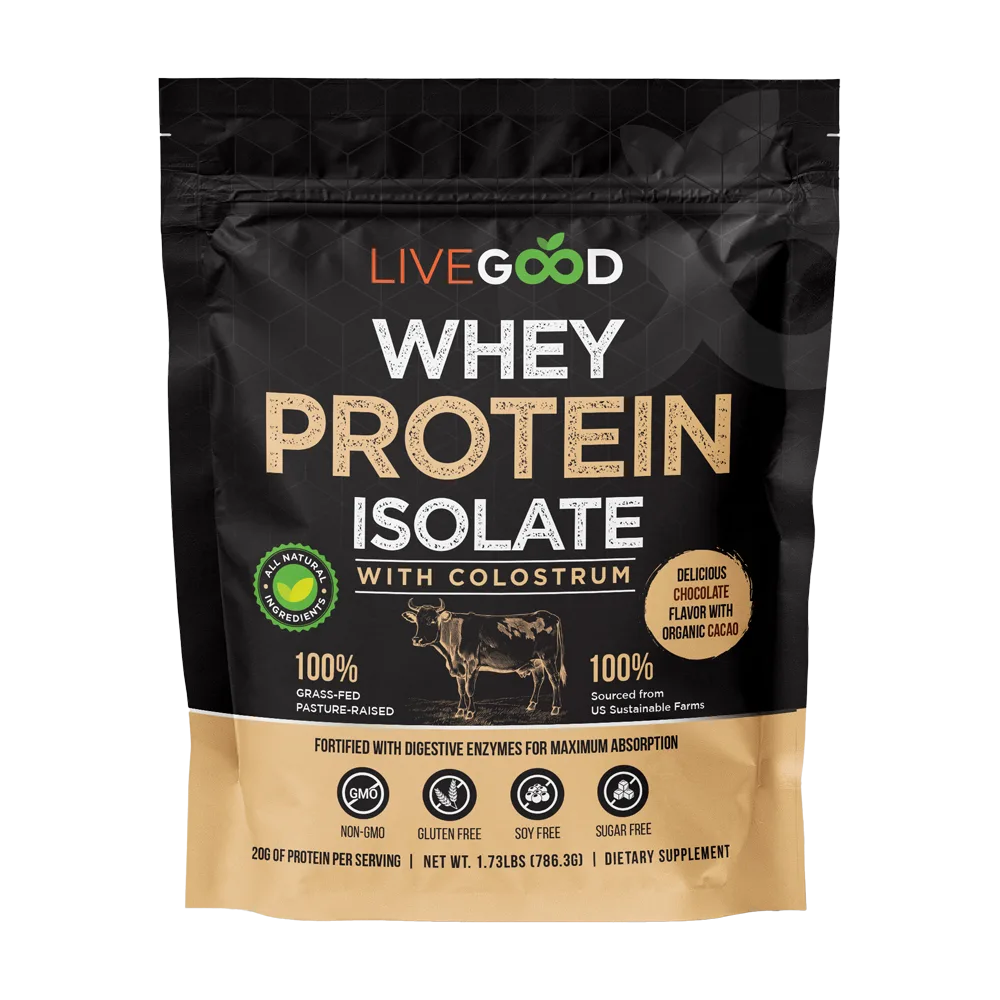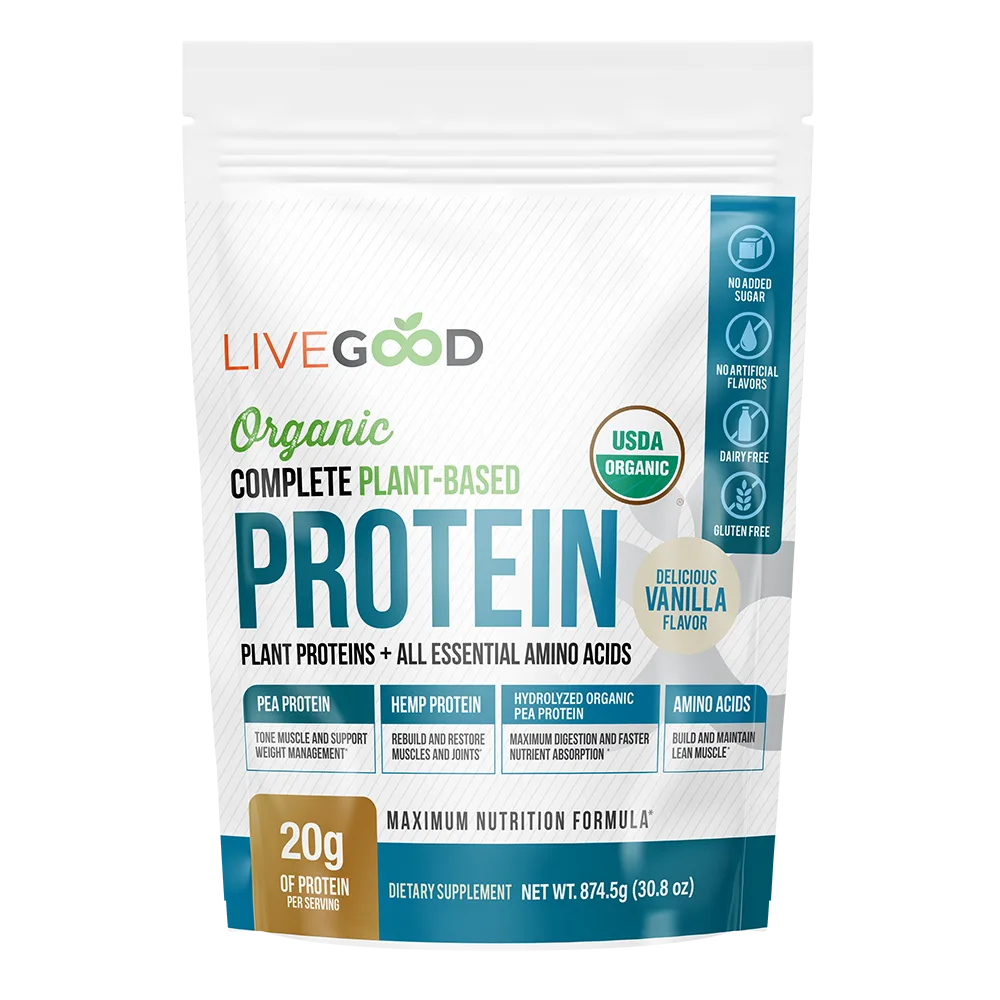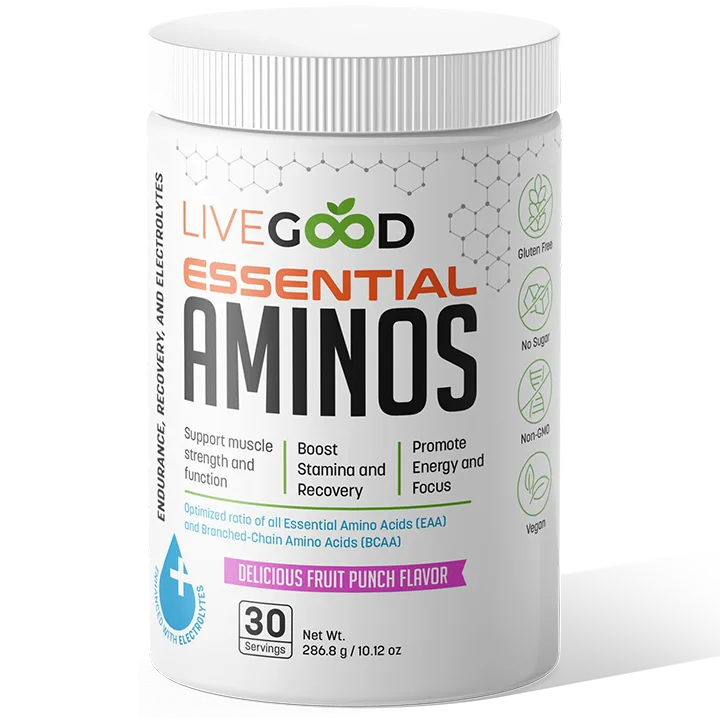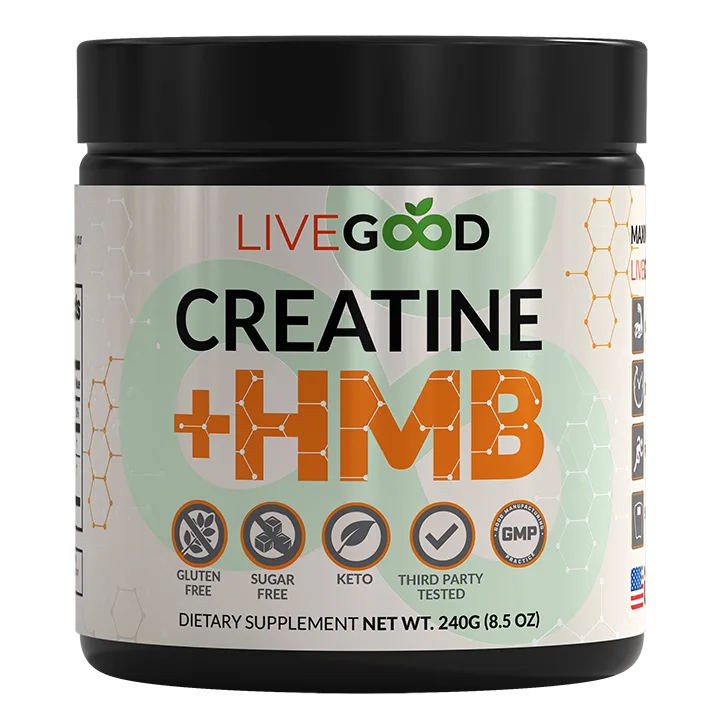Building muscle is simple in theory and technical in practice. The Best Protein Supplements for Muscle Gain help close the gap. A consistent intake of complete protein, divided across the day, drives muscle protein synthesis, protects lean mass, and shortens recovery time. The operational target is clear: hit 1.6 to 2.2 grams of protein per kilogram of body weight per day, with meals of 0.4 to 0.6 grams per kilogram spread over 3 to 5 feedings. The result is more lean muscle, better strength, and better session quality.
Use objective measures. Track weekly bodyweight trends, log key lifts, measure arms and thighs with a tape, and keep a food log. If protein intake drops below target, expect slower gains, lower energy, and risk of muscle loss over time. Choose complete proteins that deliver all essential amino acids and verify quality on the label.
Understanding Protein Types and Decision Rules

Protein type determines digestion speed, leucine delivery, and use case. Use these definitions and rules to assign the right tool to the right job.
- Whey: Fast digesting, high in leucine, strong post-workout option. Supports mTOR signaling and rapid muscle protein synthesis.
- Casein: Slow release over hours, ideal pre-sleep. Reduces overnight muscle breakdown and supports satiety during cuts.
- Blends: Staged absorption for steady coverage. Useful as an all-day baseline or when travel disrupts meal timing.
- Isolate vs concentrate: Isolates are higher purity, lower in lactose, and mix cleaner. Concentrates are budget friendly with slightly more carbs and fats.
- Hydrolysate: Pre-digested for faster uptake, usually at a higher cost.
Decision rules:
- If lactose sensitive, choose isolates or plant-based options.
- During cuts, favor isolates for purity and easier macro control.
- During bulks, pair protein with carbs and fats to push calories.
- Verify complete amino acid profiles to support muscle repair and immune health.
For high-level buying criteria, align with clinical guidance to target 20 to 30 grams of protein and low sugars per serving, then scale to needs. See a concise checklist from Johns Hopkins on protein supplement selection with calorie, protein, and sugar ranges in their guidance on suggested protein supplements.
Best Protein Supplements for Muscle Gain: Whey Protein Options
Whey is the fast-uptake choice. It delivers a high leucine dose, which triggers muscle protein synthesis quickly. Use whey immediately after training or between meals when fast amino delivery is needed.
- Benefits: High leucine content for anabolic signaling, rapid digestion after training, versatile in shakes and recipes.
- When to deploy: Post-workout, mid-day when meals are spaced, as a base for higher calorie mass shakes.
For brand comparisons and market context, independent roundups like Men’s Health’s tested picks offer reference points on purity and performance, such as their review of the best whey protein powders 2025.
Casein Protein Options
Casein releases amino acids slowly for 6 to 8 hours. This helps reduce overnight muscle breakdown and can improve satiety when calories are tight.
- Best forms: Micellar casein for true slow release, caseinate for easier mixing.
- When to deploy: Before sleep, during long gaps between meals, or when hunger control is needed on a cut.
Protein Blends and Staged-Release Options
Blends combine fast, medium, and slow proteins for all-day coverage. Common builds pair whey with egg white and micellar casein.
- Benefits: More stable amino acid availability, better hunger management, flexible for any time of day.
- When to deploy: As a default protein when timing is variable, during travel, or for morning and afternoon anchors.
Plant-Based Alternatives for Dairy-Sensitive Lifters
Plant-based proteins are effective with the right build. Pea and rice blends create a complete amino profile, and added enzymes can improve digestion. Pea protein is naturally rich in iron and low in fat.
- Benefits: Complete amino profiles when blended, higher iron intake, cleaner digestion for many.
- When to deploy: Lactose intolerance, vegan preference, or variety within a weekly plan.
Support Stack to Enhance Protein Effectiveness
- Creatine: 3 to 5 grams daily to fuel short, intense efforts and drive strength gains over time.
- HMB: Supports muscle recovery and may reduce muscle loss, especially when paired with creatine.
- EAAs: 10 to 15 grams as a calorie-light option when meals are delayed or appetite is low.
- Hydration and electrolytes: 2.5 to 4 liters of fluid per day with electrolytes to support training quality.
- Collagen and greens: Collagen for tendon and joint support, greens or reds powders to cover micronutrient gaps.
For independent benchmarks across categories, a broad comparison like Forbes’ protein powder guide provides additional context by use case.
Whey Protein: The Fast-Track to Anabolic Recovery
Whey is the post-training workhorse. It provides a strong leucine pulse that supports mTOR activation, which drives muscle building. It absorbs quickly, mixes cleanly, and supports flexible recipes.
Types and use:
- Isolate: High purity, low lactose, ideal during cuts or for sensitive digestion.
- Concentrate: More budget friendly, with small amounts of carbs and fats.
- Hydrolysate: Faster uptake at a higher price.
Dosing:
- Post-workout: 25 to 40 grams whey with 30 to 60 grams carbs during a bulk.
- Between meals: 20 to 30 grams to add a feeding and hit daily targets.
Quality checks:
- At least 22 grams of protein per scoop.
- Around 2.5 grams leucine per serving.
- Clean ingredients and transparent labeling.
Evaluate LiveGood Whey Protein Isolate for practical use. It provides 20 grams of complete protein with all nine essential amino acids, plus colostrum for immune support and digestive enzymes for better absorption. Reviews highlight a smooth chocolate flavor, easier next-day recovery, and strong value against higher-priced competitors. See product details at LiveGood Whey Protein Isolate. For deeper brand content, the internal product brief on this site presents the build and use cases at whey protein isolate for muscle building.
Casein Protein: Sustained Support for Overnight Muscle Protection
Casein’s slow release makes it the overnight anchor. It limits muscle protein breakdown while sleeping and helps control hunger during calorie deficits.
- Dosing: 30 to 40 grams pre-sleep, or during long periods without meals.
- Form selection: Micellar casein first for gradual absorption. Caseinate if mixability is a priority.
- Label checks: Micellar listed as the primary protein, few additives, consistent mixability.
This aligns with the broader objective of preserving lean mass across the lifespan. A steady supply of amino acids helps maintain muscle quality, especially as recovery demands stack with age.
Protein Blends: Balanced Coverage for Consistent Gains
Blends offer staged release. A mix of whey, egg white, and micellar casein covers fast, medium, and slow digestion.
- Use cases: Morning or afternoon anchor shakes, travel days, or training blocks with variable schedules.
- Dosing: 25 to 35 grams per serving. Use as a base to build nutrient-dense shakes.
Plant-Based Proteins: Effective Dairy-Free Muscle Builders
Plant proteins can match outcomes when built correctly. Pea and rice combinations provide a complete amino profile, and added digestive enzymes can improve uptake. Pea protein carries extra iron and is naturally low in fat.
- Dosing: 25 to 40 grams to hit leucine thresholds and support muscle protein synthesis.
- Optional add-ins: Add a small serving of EAAs if the blend is light on leucine.
Consider LiveGood’s plant option for a broader nutrition profile. The formula uses organic pea and hemp proteins, both complete and supportive of muscle and joint health, and layers 26 vitamins and minerals including B vitamins for energy and iron for muscle function. Feedback notes smooth mixing, vanilla taste, and strong satiety for meal replacement. Review and purchase via LiveGood Plant-Based Protein. For additional reading on product positioning and use, see this internal overview: organic plant-based protein for muscle recovery.
Enhancing Your Stack: Supplements That Maximize Protein Benefits
Pair protein with proven adjuncts to raise return on intake.
- Creatine: 5 grams daily is standard. It fuels high-intensity reps and supports lean mass. LiveGood provides a clean build with no fillers and includes HMB. See LiveGood Creatine + HMB.
- HMB: Paired with creatine, it supports recovery and strength. Internal data and reviews indicate strength gains within four weeks when dosing is consistent.
- EAAs: Use 10 to 15 grams when appetite or time blocks full meals. The blend also supports hydration with electrolytes. See LiveGood Essential Aminos. For additional guidance and internal context, check essential amino acids for muscle protection.
- Hydration: Maintain 2.5 to 4 liters fluid per day. Add electrolytes during high-heat training or long sessions. See LiveGood Hydration Amplifier.
- Collagen and micros: Add collagen for connective tissue support and greens or reds for micronutrient density. See LiveGood Collagen, Organic Super Greens, and Organic Super Reds.
Dosing Protocols Tailored to Your Fitness Goals
Use protein targets and timing that match the goal state. Keep creatine daily regardless of phase.
- Lean bulk: 2.0 to 2.2 g/kg daily. Whey 25 to 40 grams post-workout plus 30 to 60 grams carbs. Casein 30 to 40 grams at bedtime.
- Recomp: 2.2 g/kg daily. Four protein feedings of 25 to 35 grams. Daily creatine. Add EAAs if meals are delayed.
- Cut: 2.4 g/kg daily. Whey post-workout for recovery. Casein at night for satiety and anti-catabolic support.
Most studies support protein after training within 30 minutes. Some athletes respond well to pre-workout dosing. Personalize based on digestion and session feel.
Optimal Timing and Frequency for Protein Intake
Build a repeatable schedule and stick to it.
- Pre-workout: 20 to 30 grams whey or EAAs if fasted or time is tight.
- Post-workout: 25 to 40 grams whey with carbs if bulking or if the session was long.
- Bedtime: 30 to 40 grams casein for overnight protection.
- Rest days: Maintain daily totals with even spacing.
Use a shaker bottle for on-the-go dosing and keep a serving measured in the bottom compartment to simplify compliance.
Building Muscle with Protein Shakes: Recipe Templates
Use these templates to hit calorie targets without junk fillers.
- Whey mass shake: 30 grams whey, 12 ounces milk, 60 grams oats, 1 banana, 1 tablespoon peanut butter. Target 600 to 800 calories.
- Casein night shake: 30 grams casein, 10 ounces almond milk, 1 tablespoon cocoa powder, ice. Target 300 to 400 calories.
- Plant bulker: 35 grams plant protein, 12 ounces oat milk, 1 cup mixed berries, 1 tablespoon chia seeds. Target 500 to 700 calories.
Useful add-ins:
- Organic greens or reds for micronutrients.
- Cinnamon for taste and an easy flavor shift.
Log calories. Track weekly average bodyweight and adjust.
Using Whey Protein for Weight Gain Without Excess Junk
Pair whey with dense but simple foods. Add oats or fruit for carbs, nut butters or flax for fats, and dairy milk for extra calories if tolerated. Track every shake and chart weekly bodyweight averages. Protein protects lean mass while calories do the mass-building work.
Quality Checklist: Reading Labels Like a Pro
Use this label audit to verify quality and fit.
- Protein density: 75 percent or higher by weight per serving.
- Leucine content: Roughly 2.5 grams per serving.
- Testing: Third-party tested and transparent labels.
- Additives: Minimal sweeteners and gums.
- Allergens: Clear lactose and soy statements.
- Cost: Compare cost per 20 grams of protein, not per tub.
LiveGood formulas are non-GMO and gluten free, with clean profiles and dose-appropriate builds for lifters.
Avoiding Common Mistakes in Protein Supplementation
Eliminate these failure modes.
- Under-dosing meals: Fix with 25 to 40 grams protein every 3 to 5 hours.
- Ignoring calories: Add measured carbs and fats when mass gain stalls.
- Over-relying on shakes: Use them to supplement, not replace every meal.
- GI issues: Switch to isolates or plant-based options.
- Inconsistent creatine: Make it a daily non-negotiable.
Timing after training is helpful, but consistency across the day matters more. Personalize based on digestion and schedule.
Product Recommendations by Training Scenario
Match the use case to the product class.
- Fast post-workout: Whey isolate for quick absorption and high leucine.
- Overnight: Micellar casein for slow release.
- All-day coverage: Blends for staged digestion.
- Dairy-free: Plant-based blends with complete profiles.
- Budget: Concentrates if lactose tolerance and macros allow.
LiveGood coverage:
Supplement | Description/benefit |
|---|---|
Whey Isolate with colostrum and enzymes for post-workout and cutting phases | |
Plant-based protein with 26 vitamins and minerals for meal replacements and dairy-free builds | |
Essential amino acids for low-calorie amino support | |
Creatine plus HMB for strength and recovery |
For a third-party perspective on category leaders, see Generator Athlete Lab’s breakdown of best protein powder for muscle gain.
Sample Weekly Protein Shake Schedule for Muscle Building
Use this as a template and adjust to total daily protein.
- Heavy training days: Post-workout whey plus carbs. Bedtime casein.
- Accessory days: Mid-morning blend. Bedtime casein.
- Rest days: Morning plant-based shake. Afternoon whey.
Lock the schedule in a calendar and set reminders.
Frequently Asked Questions About Protein for Muscle Gain
- How much whey or casein daily? Total protein is the driver. Hit 1.6 to 2.2 g/kg and use whey or casein to fill gaps.
- Are blends better than whey alone? Different tool, different job. Whey is ideal after training. Blends help with steady intake during the day.
- Do plant proteins work as well? Yes, when built as complete profiles and dosed at 25 to 40 grams. Pea and rice blends with enzymes are effective.
- When should casein be taken? Pre-sleep or when long gaps occur. Aim for 30 to 40 grams.
- Is creatine necessary? It is not required, but it is highly effective. Use 5 grams daily. The creatine plus HMB combo has strong feedback on strength and recovery.
- How many shakes per day? One to three, based on food intake. Use shakes to close gaps, not replace all meals.
- What is the difference between isolate and concentrate? Isolate is higher purity and lower lactose. Concentrate is more budget friendly with added macros.
- What if protein causes stomach issues? Switch to isolate or plant-based options. Adjust serving size and liquid volume.
- Train fasted. What then? Use EAAs pre-workout or 20 to 30 grams whey if digestion tolerates it.
- Combine EAAs with whey? If whey intake is adequate, EAAs are optional. Use EAAs when appetite is low or during fasted sessions.
- What to mix during a cut or bulk? During a cut, use water or low-calorie mixers. During a bulk, add oats, milk, fruit, and nut butters.
- Which LiveGood variants fit each slot? Post-workout: LiveGood Whey Protein Isolate. Dairy-free or meal replacement: LiveGood Plant-Based Protein. Amino support: LiveGood Essential Aminos. Strength and recovery: LiveGood Creatine + HMB. Hydration support: LiveGood Hydration Amplifier.
Quick Reference: Protein Type Matrix
| Protein Type | Digestion Speed | Best Use | Key Checks |
|---|---|---|---|
| Whey Isolate | Fast | Post-workout, cuts | 20 to 30 g protein, low lactose |
| Whey Concentrate | Medium | Budget bulks | Macro fit, taste |
| Hydrolysate | Very fast | Premium post-workout | Cost vs benefit |
| Micellar Casein | Slow | Pre-sleep, long gaps | Micellar listed first |
| Blends | Mixed | All-day coverage | Balanced profile |
| Plant Blends | Medium | Dairy-free, variety | Complete amino profile, enzymes |
Conclusion
Muscle gain is a system. Set total protein, standardize timing, and select the right protein type for each slot. Use whey for fast post-workout recovery, casein for overnight coverage, and blends for everyday stability. Add calories for a bulk with simple carbs and fats. Layer creatine, EAAs, and hydration to raise the return on each gram of protein. Verify labels, log intake, and review weekly trends.
Evaluate options that combine clean labels with complete profiles. LiveGood’s lineup covers the key roles with whey isolate plus colostrum and enzymes, a nutrient-dense plant-based protein, EAAs with electrolytes, and creatine plus HMB. Build the plan, run the plan, and document the results. Strong habits and the Best Protein Supplements for Muscle Gain do the rest.
Internal resources for deeper dives:




